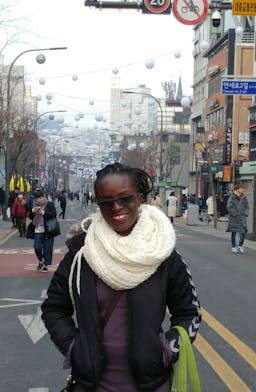HIV and AIDS in my community prompted me to take action
May 28, 2019
Story
I was just a teenager when the Kenyan government declared HIV and AIDS a natural disaster in November 1999 with an estimated 2 million out of 30 million Kenyans infected. In the late 1990s, many of my relatives come from the village one after the other to seek medical attention in the city. Most of them would stay at our house in Nakuru because we lived in an urban town where they could access medical attention faster. My uncle was also a medical doctor who provided treatment for them free of charge and was able to assist them to get affordable antiretroviral drugs easily.
At that time, I could hear rumours around the house and from the village that they were suffering from HIV. I also noticed that, my relatives secluded themselves from the rest of the family not wanting anyone to ask them questions about their health or why they were so sick. In my young and naïve mind, I knew that whatever they were suffering from was a bad disease known as AIDS. This is because one of my high school teachers shared briefly with us about the HIV/AIDS pandemic during one of our ‘True Love Waits’ club days. The wounds in their bodies and the obvious pain they went through also matched what we had learnt at the school club event. After receiving medical treatment in the city, my relatives would go back to the village but would soon pass away after a few months. I could hear my parents talk about the passing on of a certain relative whom I had just met a few months ago. As more relatives came to seek treatment more deaths followed.
Deeply disturbed by the passing of my relatives and some of our family friends whom most came from western Kenya, I decided to ask my parents everything they knew about HIV and AIDS. My parents gave me a one on one session about HIV and AIDS with their advice coming out clear that I should ensure I don’t contract the virus. At the time, they feared that I could contract HIV through sharing items such as spoons etc. Not being able to answer all my questions, they would later buy me a book that taught about all one should know about the HIV/AIDS pandemic. From this book I learnt how one could prevent him or herself from contracting the virus, opportunistic infections and treatment therapy, and most importantly, how to prevent stigma and discrimination. I also realized that most people knew little about HIV and AIDS whereby a lot of information was mythical. Some of the myths I learnt at the time were that HIV and AIDS was a curse, needing ritual cleansing and that one could contract HIV and AIDS through hugging.
Armed with factual and reliable information about HIV/AIDS, I joined many youth focused non-governmental organizations as a volunteer after high school to help create awareness about the HIV and AIDS pandemic. As a result, I got many capacity building opportunities to gain more knowledge and information about HIV prevention, treatment, care and support, and earned many good friends infected and affected with the disease. Among the organizations that empowered me included the National Aids Control Council (NACC) in Kenya which took me through a course on the Greater Involvement of People leaving with AIDS (GIPA) in the work environment. My work also saw me give life skills training with special focus on HIV/AIDS prevention to youth groups within Nairobi, and primary and high school students. During World AIDS Day celebrations, I would distribute fliers on HIV prevention, fighting stigma and discrimination given by my uncle who is medical doctor.
In 2010, my passion for creating awareness on the HIV/AIDS pandemic saw me join the Global Youth Coalition on HIV/AIDS (GYCA) where I was elected the regional focal point for Eastern Africa by young people in the region. This position gave me the platform to create greater awareness on HIV and AIDS prevention among young people, especially girls and young women who have higher prevalence rates due to socio-cultural and economic issues. I also had the opportunity to shape youth policies and public policies on HIV/AIDS at the national, regional and international level in key forums such the UNAIDS summit on Universal Access to HIV/AIDS Prevention, Treatment, Care and Support as well as leading side events targeting young women in conferences such as the 2010 International AIDS Conference in Vienna, Austria. To date, I am happy to have contributed to the youth HIV and AIDS response at the policy level in Kenya and Africa. Presently, Kenya is ranked fourth worldwide with HIV and AIDS infections at 1.6 million people according to the Ministry of Health. As an avid campaigner of a better, safer and healthier environment for women and girls in my country, I have vowed to continue championing HIV and AIDS prevention, treatment, care and support until Kenya attains at zero HIV/AIDS infections and zero stigma and discrimination.




